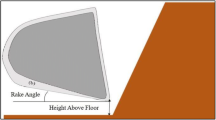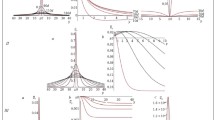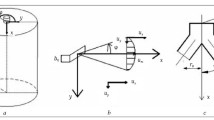Abstract
This paper examines the effect of bucket geometry (cutting blade profile, floor profile, and blade thickness), speed, motor power output, and muckpile particle sizes on bucket penetration and draft for rubber tire loaders. The work uses a 1:16 scaled model of a load-haul-dump in full factorial experiments to examine the effect of the variables on penetration and maximum draft. The results show that speed and motor output are positively correlated to penetration and draft; muckpile particle size is positively correlated to penetration and negatively correlated to draft (p < 0.0014). The results show that buckets with a semi-spade cutting nose profile yield the highest penetration (mean 118.30 mm) followed by those with the spade (mean 108.88 mm), which also yield higher penetration than those straight blades (mean 95.19 mm). Bucket floor profile and blade thickness had no significant effect on penetration or draft. Also, we determined that increasing the speed and motor power output, simultaneously, can reduce bucket penetration. Thus, operators should not waste energy for no additional gain or even loss in bucket penetration. Also, the work finds speed and motor power output each combine with muckpile particle sizes to affect bucket penetration. This research furthers our understanding of the effectiveness of different bucket geometries in improving penetration and reducing draft for rubber tire loaders.











Similar content being viewed by others
References
Abo-Elnor M, Hamilton R, Boyle JT (2003) 3D Dynamic analysis of soil-tool interaction using the finite element method. J Terramechanics 40:51–62. https://doi.org/10.1016/j.jterra.2003.09.002
Ashrafizadeh, S.R., Kushwaha, R.L., 2003. Soil failure model in front of a tillage tool action-a review. Can. Soc. Eng. Agric. food Biol. Syst. CSAE 1–28.
Bentaher H, Ibrahmi A, Hamza E, Hbaieb M, Kantchev G, Maalej A, Arnold W (2013) Finite element simulation of moldboard-soil interaction. Soil Tillage Res 134:11–16. https://doi.org/10.1016/j.still.2013.07.002
Bernardini G, Azzolini M, D’Orazio M, Quagliarini E (2016) Intelligent evacuation guidance systems for improving fire safety of Italian-style historical theatres without altering their architectural characteristics. J Cult Herit 22:1006–1018. https://doi.org/10.1016/j.culher.2016.06.008
Buckingham E (1915) The principle of similitude [1]. Nature. https://doi.org/10.1038/096396d0
Coutinho CP, Baptista AJ, Dias Rodrigues J (2016) Reduced scale models based on similitude theory: A review up to 2015. Eng Struct. https://doi.org/10.1016/j.engstruct.2016.04.016
Czarnecki J, Brennensthul M, Białczyk W, Ptak W, Gil Ł (2019) Analysis of traction properties and power of wheels used on various agricultural soils. Agric Eng 23:13–23. https://doi.org/10.1515/agriceng-2019-0002
Elbashir, M.A., Zhao, Z., Hebeil, E.A., Li, X., 2014. Comparative finite element analysis of the effects of tillage tool geometry on soil disturbance and reaction forces. Res. J. Appl. Sci. Eng. Technol. 7, 3145–3149. https://doi.org/10.19026/rjaset.7.653
Formato A, Faugno S, Paolillo G (2005) Numerical simulation of soil-plough mouldboard interaction. Biosyst Eng 92:309–316. https://doi.org/10.1016/j.biosystemseng.2005.07.005
Frimpong S, Hu Y, Awuah-Offei K (2005) Mechanics of cable shovel-formation interactions in surface mining excavations. J Terramechanics 42:15–33. https://doi.org/10.1016/j.jterra.2004.06.002
Gáspár, F., Coţa, C., Cârdei, P., Viorel Fechete-Tutunaru, L., 2019. Starting traction effort evaluation for a simple tillage tool.
Glancey JL, Upadhyaya SK, Chancellor WJ, Rumsey JW (1996) Prediction of agricultural implement draft using an instrumented analog tillage tool. Soil Tillage Res 37:47–65. https://doi.org/10.1016/0167-1987(95)00507-2
Godwin RJ (2007) A review of the effect of implement geometry on soil failure and implement forces. Soil Tillage Res. https://doi.org/10.1016/j.still.2006.06.010
He C, You Y, Wang D, Wang G, Lu D, Kaji MT, J., (2016) The effect of tine geometry during vertical movement on soil penetration resistance using finite element analysis. Comput Electron Agric 130:97–108. https://doi.org/10.1016/j.compag.2016.10.007
Hemami, A., Daneshmend, L., 1992. Force analysis for automation of the loading operation in an LHD-loader, in: Proceedings – IEEE International Conference on Robotics and Automation. Publ by IEEE, pp. 645–650. https://doi.org/10.1109/robot.1992.220219
Ibrahmi A, Bentaher H, Hamza E, Maalej A, Mouazen AM (2017) 3D finite element simulation of the effect of mouldboard plough’s design on both the energy consumption and the tillage quality. Int J Adv Manuf Technol 90:473–487. https://doi.org/10.1007/s00170-016-9391-9
Ibrahmi A, Bentaher H, Hamza E, Maalej A, Mouazen AM (2017) Advanced analytical method of mouldboard plough’s design. Int J Adv Manuf Technol 88:781–788. https://doi.org/10.1007/s00170-016-8806-y
Ibrahmi A, Bentaher H, Hamza E, Maalej A, Mouazen AM (2015) Study the effect of tool geometry and operational conditions on mouldboard plough forces and energy requirement: part 2. Experimental validation with soil bin test. Comput Electron Agric 117:268–275. https://doi.org/10.1016/j.compag.2015.08.004
Ibrahmi A, Bentaher H, Hbaieb M, Maalej A, Mouazen AM (2015) Study the effect of tool geometry and operational conditions on mouldboard plough forces and energy requirement: part 1. Finite element simulation Comput Electron Agric 117:258–267. https://doi.org/10.1016/j.compag.2015.08.006
Jimeno, C.L., Carcedo, F.J.A., De Ramiro, Y.V., 1995. Drilling and blasting of rocks.
Ju Y, Wang Y, Su C, Zhang D, Ren Z (2019) Numerical analysis of the dynamic evolution of mining-induced stresses and fractures in multilayered rock strata using continuum-based discrete element methods. Int J Rock Mech Min Sci 113:191–210. https://doi.org/10.1016/j.ijrmms.2018.11.014
Kumar, A.R., 2018. Dust control examination using computational fluid dynamics modeling and laboratory testing of vortecone and impingement screen filters. https://doi.org/10.13023/etd.2018.383
Kumar, B., Alam, T., 2016. Excavator bucket tooth wear analysis, in: International Conference on Electrical, Electronics, and Optimization Techniques, ICEEOT 2016. Institute of Electrical and Electronics Engineers Inc., pp. 3364–3366. https://doi.org/10.1109/ICEEOT.2016.7755328
Lever PJA, Wang F-Y (1995) Intelligent excavator control system for lunar mining system. J Aerosp Eng 8:16–24. https://doi.org/10.1061/(ASCE)0893-1321(1995)8:1(16)
Maciejewski J, Jarzȩbowski A (2002) Laboratory optimization of the soil digging process. J Terramechanics 39:161–179. https://doi.org/10.1016/S0022-4898(02)00022-8
Manuwa SI (2009) Performance evaluation of tillage tines operating under different depths in a sandy clay loam soil. Soil Tillage Res 103:399–405. https://doi.org/10.1016/j.still.2008.12.004
Manuwa SI, Ogunlami MO (2010) Soil-tool interaction modeling of parameters of soil profile produced by tillage tools. J Eng Appl Sci 5:91–95. https://doi.org/10.3923/jeasci.2010.91.95
Mari, I.A., Chandio, F.A., Changying, J., Arslan, C., Tagar, A.A., Huimin, F., others, 2014. Performance and evaluation of disc tillage tool forces acting on straw incorporation soil. Pakistan J. Agric. Sci. 51.
Mari IA, Ji C, Chandio FA, Arslan C, Sattar A, Ahmad F (2015) Spatial distribution of soil forces on moldboard plough and draft requirement operated in silty-clay paddy field soil. J Terramechanics 60:1–9. https://doi.org/10.1016/j.jterra.2015.02.008
Moinfar AM, Shahgholi G (2018) Dimensional analysis of the tractor tractive efficiency parameters. Acta Technol Agric 21:94–99. https://doi.org/10.2478/ata-2018-0017
Narayanan, A., Bhojne, S., 2017. Construction equipment’s bucket design based on soil-tool interaction-analytical and DEM approach, in: SAE Technical Papers. https://doi.org/10.4271/2017-26-0234
Nezami EG, Hashash YMA, Zhao D, Ghaboussi J (2007) Simulation of front end loader bucket–soil interaction using discrete element method. Int J Numer Anal Methods Geomech 31:1147–1162. https://doi.org/10.1002/nag.594
Petty, M.K., Billingsley, J., Tran-Cong, T., 1997. Autonomous LHD loading, in: Proceedings of the Annual Conference on Mechatronics and Machine Vision in Practice, MViP. pp. 219–224. https://doi.org/10.1109/mmvip.1997.625330
Qinsen Y, Shuren S (1994) A soil-tool interaction model for bulldozer blades. J Terramechanics 31:55–65. https://doi.org/10.1016/0022-4898(94)90007-8
Ramu M, Prabhu Raja V, Thyla PR (2013) Establishment of structural similitude for elastic models and validation of scaling laws. KSCE J Civ Eng 17:139–144. https://doi.org/10.1007/s12205-013-1216-x
Ranjbarian S, Askari M, Jannatkhah J (2017) Performance of tractor and tillage implements in clay soil. J Saudi Soc Agric Sci 16:154–162. https://doi.org/10.1016/j.jssas.2015.05.003
Ridley P, Corke P (2003) Load haul dump vehicle kinematics and control. J Dyn Syst Meas Control 125:54. https://doi.org/10.1115/1.1541671
Safa M, Tabatabaeefar A (2008) Fuel consumption in wheat production in irrigated and dry land farming. World J Agric Sci 4:89–90
Sanchidrian, J.A., 2009. Rock fragmentation by blasting: Proceedings of the 9th Int. Symp. on Rock Fragmentation by Blasting-Fragblast 9, Sept. 2009, Granada Spain. CRC Press.
Šarauskis E, Vaitauskiene K (2014) Research of mechanical traction characteristics of direct sowing equipment. Mechanika 20:506–511. https://doi.org/10.5755/j01.mech.20.5.7149
SAS Institute Inc., 2019. JMP Pro 14.1 Generalized Regression Models.
Shafaei SM, Loghavi M, Kamgar S (2019) A practical effort to equip tractor-implement with fuzzy depth and draft control system. Eng Agric Environ Food 12:191–203. https://doi.org/10.1016/j.eaef.2018.12.008
Shahgholi, G., Kanyawi, N., Kalantari, D., 2019. Modeling the effects of narrow blade geometry on soil failure draught and vertical forces using discrete element method. Yuz. Yil Univ. J. Agric. Sci. 29, 24–33. https://doi.org/10.29133/yyutbd.429950
Solhjou A, Desbiolles JMA, Fielke JM (2013) Soil translocation by narrow openers with various blade face geometries. Biosyst Eng 114:259–266. https://doi.org/10.1016/j.biosystemseng.2012.12.018
Tamás, K., Oláh, Z., Rácz-Szabó, L., Hudoba, Z., 2018. Investigation of soil-sweep interaction in laboratory soil bin and modelling with discrete element method, in: Proceedings - European Council for Modelling and Simulation, ECMS. pp. 421–428. https://doi.org/10.7148/2018-0421
Ucgul M, Fielke JM, Saunders C (2015) Three-dimensional discrete element modelling (DEM) of tillage: accounting for soil cohesion and adhesion. Biosyst Eng 129:298–306. https://doi.org/10.1016/j.biosystemseng.2014.11.006
Ucgul M, Fielke JM, Saunders C (2015) Defining the effect of sweep tillage tool cutting edge geometry on tillage forces using 3D discrete element modelling. Inf Process Agric 2:130–141. https://doi.org/10.1016/j.inpa.2015.07.001
Ucgul M, Fielke JM, Saunders C (2014) 3D DEM tillage simulation: validation of a hysteretic spring (plastic) contact model for a sweep tool operating in a cohesionless soil. Soil Tillage Res 144:220–227. https://doi.org/10.1016/j.still.2013.10.003
Ur Rehman, A., 2021. Using similitude theory and discrete element modeling to understand the effects of digging parameters on excavation performance for rubber tire loaders. Dr. Diss.
Ur Rehman, A., 2017. Design and development of stemming plug to enhance blast performance. University of Engineering and Technology, Lahore. https://doi.org/10.13140/RG.2.2.15991.47523
Ur Rehman A, Awuah-Offei K (2020) Understanding how speed, tractive effort, digging height, and rake angle affect bucket penetration and resistive forces for rubber tire loaders. Mining. Metall Explor 37:1423–1435. https://doi.org/10.1007/s42461-020-00288-5
Ur Rehman, A., Awuah-Offei, K., 2020b. Resistive force analysis for design of rubber tire loader buckets, in: Proceedings of the ASME 2020. American Society of Mechanical Engineers, St Louis, pp. 1–8.
Ur Rehman A, Lyche T, Awuah-Offei K, Nadendla VSS (2020) Effect of text message alerts on miners evacuation decisions. Saf Sci 130:104875. https://doi.org/10.1016/j.ssci.2020.104875
Wismer RD, Luth HJ (1972) Performance of plane soil cutting blades in clay. Trans ASAE 15:211–216
Zeng Z, Chen Y (2018) The performance of a fluted coulter for vertical tillage as affected by working speed. Soil Tillage Res 175:112–118. https://doi.org/10.1016/j.still.2017.08.006
Zhang XC, Li HW, Du RC, Ma SC, He J, Wang QJ, Chen W, Zheng Z, Zhang ZQ (2016) Effects of key design parameters of tine furrow opener on soil seedbed properties. Int J Agric Biol Eng 9:67–80. https://doi.org/10.3965/j.ijabe.20160903.2259
Acknowledgements
We are grateful for the assistance of Mr. Bill Deporter, Dr. Eric Achelpohl, Jesse Dubberly, Mark Barr, and Nelson Stoldt, for their technical assistance during the experiments. We also acknowledge Komatsu Mining Corp., Longview, TX Facility, for funding this research. We are also grateful for the reviewer comments that has improved the analysis in this paper.
Author information
Authors and Affiliations
Contributions
The authors read and approved the final manuscript.
Corresponding author
Ethics declarations
Conflict of interest
The authors declare no competing interests.
Additional information
Publisher's Note
Springer Nature remains neutral with regard to jurisdictional claims in published maps and institutional affiliations.
Appendix
Appendix
Rights and permissions
About this article
Cite this article
Ur Rehman, A., Awuah-Offei, K. Effect of Bucket Geometry, Machine Variables, and Fragmentation Size on Performance of Rubber-Tired Loaders. Mining, Metallurgy & Exploration 39, 111–127 (2022). https://doi.org/10.1007/s42461-021-00497-6
Received:
Accepted:
Published:
Issue Date:
DOI: https://doi.org/10.1007/s42461-021-00497-6




